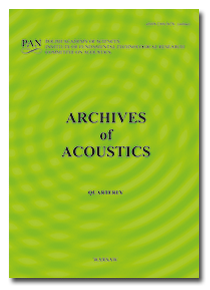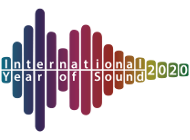10.24425/aoa.2018.125156
Voice Traces of Anxiety: Acoustic Parameters Affected by Anxiety Disorder
References
Banse R., Scherer K.R. (1996), Acoustic profiles in vocal emotion expression, Journal of Personality and Social Psychology, 70, 3, 614.
Beck A.T., Steer R.A. (1993), Beck anxiety inventory manual. San Antonio, TX: The psychological corporation, Harcourt Brace & Company.
Beck A.T., Epstein N., Brown G., Steer R.A. (1988), An inventory for measuring clinical anxiety: psychometric properties, Journal of Consulting and Clinical Psychology, 56, 6, 893.
Diamond G.M., Rochman D., Amir O. (2010), Arousing primary vulnerable emotions in the context of unresolved anger: “Speaking about” versus “speaking to”, Journal of Counseling Psychology, 57, 4, 402.
Drioli C., Tisato G., Cosi P., Tesser F. (2003), Emotions and voice quality: experiments with sinusoidal modeling, [in:] ISCA Tutorial and Research Workshop on Voice Quality: Functions, Analysis and Synthesis, retrieved from http://www.iscaspeech.org/archive open/voqual03/voq3_127.html.
Ersöz F. (2014), Statistical Data Analysis with IBM SPSS [in Turkish: IBM SPSS ile İstatistiksel Veri Analizi], Ankara: Sage Yayıncılık.
Escalona Mena M. (2012), Emotion recognition from speech signals (Master thesis), Faculty of Electrical Engineering, University of Ljubljana, retrieved from http://upcommons.upc.edu/handle/2099.1/15362.
Fuller B.F., Horii Y., Conner D.A. (1992), Validity and reliability of nonverbal voice measures as indicators of stressor-provoked anxiety, Research in Nursing & Health, 15, 5, 379–389.
Gerçeker M., Yorulmaz İ., Ural A. (2000), Voice and speech [in Turkish: Ses ve konuşma, K.B.B. ve Baş Boyun Cerrahisi Dergisi], Journal of Ear Nose Throat and Head Neck Surgery, 8, 1, 71–78.
Goberman A.M., Hughes S., Haydock T. (2011), Acoustic characteristics of public speaking: anxiety and practice effects, Speech Communication, 53, 6, 867–876.
Hagenaars M.A., van Minnen A. (2005), The effect of fear on paralinguistic aspects of speech in patients with panic disorder with agoraphobia, Journal of Anxiety Disorders, 19, 5, 521–537.
Hamilton M.A.X. (1959), The assessment of anxiety states by rating, British Journal of Medical Psychology, 32, 1, 50–55.
Home S APA DSM-5. (n.d.), retrieved November 23, 2016, from http://www.dsm5.org/Pages/Default.aspx
Karagöz Y. (2010), The power and effectiveness of nonparametric techniques [in Turkish: Nonparametrik tekniklerin gűç ve etkinlikleri, Elektronik Sosyal Bilimler Dergisi], Electronic Journal of Social Sciences, 9, 33, 18–40.
Laukka P. et al. (2008), In a nervous voice: acoustic analysis and perception of anxiety in social phobics’ speech, Journal of Nonverbal Behavior, 32, 4, 195–214.
Murray I.R., Arnott J.L. (1993), Toward the simulation of emotion in synthetic speech: A review of the literature on human vocal emotion, Journal of the Acoustical Society of America, 93, 2, 1097–1108.
Okur E.K.M. (2001), Comparison of fundamental frequency and perturbation data analyzed by CSL and Dr. speech systems [in Turkish: CSL ve Dr. Speech ile ölçülen temel frekans ve pertürbasyon değerlerinin karşılaştırılması, KBB İhtisas Dergisi], KBB Specialization Magazine, 8, 152–157.
Özseven T., Düğenci M. (2016), The effects of digital filters on acoustic parameters, gender, age and emotion [in Turkish: Sayısal Filtrelerin Akustik Parametreler, Cinsiyet Yaş Ve Duygu Durumu Üzerindeki Etkileri, Pamukkale Üniversitesi Mühendislik Bilimleri Dergisi], Pamukkale University Journal of Engineering Sciences.
Özseven T., Düğenci M., Doruk A. (2016), The effect of age and gender on the acoustic analysis of anxious sound, International Journal of Advanced and Applied Sciences, 3, 12, 21–25.
Paulmann S., Pell M.D., Kotz S.A. (2008), How aging affects the recognition of emotional speech, Brain and Language, 104, 3, 262–269, https://doi.org/10.1016/j.bandl.2007.03.002.
Protopapas A., Lieberman P. (1997), Fundamental frequency of phonation and perceived emotional stress, Journal of the Acoustical Society of America, 101, 4, 2267–2277.
Rezaei N., Salehi A. (2006), An Introduction to Speech Sciences (Acoustic Analysis of Speech), Iranian Rehabilitation Journal, 4, 4, 5–14.
Ruiz R., Absil E., Harmegnies B., Legros C., Poch D. (1996), Time-and spectrum-related variabilities in stressed speech under laboratory and real conditions, Speech Communication, 20, 1, 111–129.
Sarıca S. (2012), Acoustic parameters that used in voice analysis [in Turkish: Ses Analizinde Kullanılan Akustik Parametreler] (Medical Specialization Thesis), Kahramanmaraş Sütçü İmam University, School of Medicine, Kahramanmaraş.
Sataloff R.T. (2005), Treatment of Voice Disorders, Plural Publishing, San Diego.
Scherer K.R., Johnstone T., Klasmeyer G. (2003), Vocal expression of emotion, [in:] Handbook of affective sciences, pp. 433–456.
Sethu V. (2009), Automatic emotion recognition: an investigation of acoustic and prosodic parameters (Doctoral dissertation), The University of New South Wales, retrieved from http://www2.ee.unsw.edu.au/_speechgroup/vidhya/pdf/phd.pdf.
Smith C.A., Lazarus R.S. (1990), Emotion and adaptation, [In:] Handbook of personality: theory and research, pp. 609–637, Guilford, New York, retrieved from http://psycnet.apa.org/psycinfo/1990-98135-023.
Ulusoy M., Sahin N.H., Erkmen H. (1998), Turkish version of the Beck Anxiety Inventory: psychometric properties, Journal of Cognitive Psychotherapy, 12, 2, 163–172.
Ververidis D., Kotropoulos C. (2006), Emotional speech recognition: resources, features, and methods, Speech Communication, 48, 9, 1162–1181, https://doi.org/10.1016/j.specom.2006.04.003
Weeks J.W. et al. (2012), “The sound of fear”: Assessing vocal fundamental frequency as a physiological indicator of social anxiety disorder, Journal of Anxiety Disorders, 26, 8, 811–822.
Yazıcı M.K., Demir B., Tanriverdi N., Karaağaoğlu E., Yolac P. (1998), Hamilton anxiety rating scale: interrater reliability and validity study, Turk Psikiyatri Derg, 9, 114–117.
DOI: 10.24425/aoa.2018.125156





